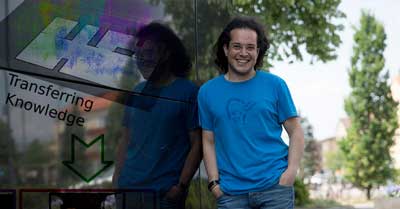| Jun 19, 2018 |
Intelligent maps will help robots navigate in your home
|
|
(Nanowerk News) Automated mobile robots have the capacity to help us with many service tasks, such as home care assistance or moving goods in a warehouse. Since robots lack human senses, they depend on sensors and other sources for navigation.
|
|
New research from Halmstad University in Sweden suggests methods for enabling robots to better understand and become more aware of their surroundings, so that they can efficiently adapt their movements in a complex work space.
|
|
When a mobile robot is given the capacity to detect the surrounding environment – everything from walls to obstacles such as humans or a chair – it can create its own map. This robotic map can be developed by adding layers of information from a variety of sources such as cameras and laser scanners. These types of enriched maps, that integrate additional knowledge into robots’ internal representation of their surroundings, are called semantic maps and is one important piece of the puzzle in creating efficient and trustworthy automated mobile robots.
|
|
”In a workspace where robots and humans operate side by side, it is important that the robots are ’well-behaved’ and aware of their surroundings. Semantic maps are one means of providing this enhanced understanding to the robot”, says PhD student Saeed Gholami Shahbandi at the School of Information Technology at Halmstad University.
|
 |
| Saeed Gholami Shahbandi
|
|
Saeed Gholami Shahbandi will defend his PhD thesis on the subject on June 14. In his research ("Interpretation and Alignment of 2D Indoor Maps: Towards a Heterogeneous Map Representation"), Saeed Gholami Shahbandi proposes map interpretation techniques through modelling and semantic annotation, in an attempt to enrich the final robotic map.
|
|
”Robotic mapping is a well-advanced field of research, relying and benefiting from a lot of different improvements in robotics, machine learning and computer vision. Such a rich discipline of research has made it possible to develop methods that can handle challenging environments such as warehouses, office buildings or homes.”
|
|
”I look forward to seeing this line of research improve human quality of life further and that robots will be accessible for everyone in their everyday life. I hope I will have the privilege to extend my contribution in this field”, saysSaeed Gholami Shahbandi.
|

